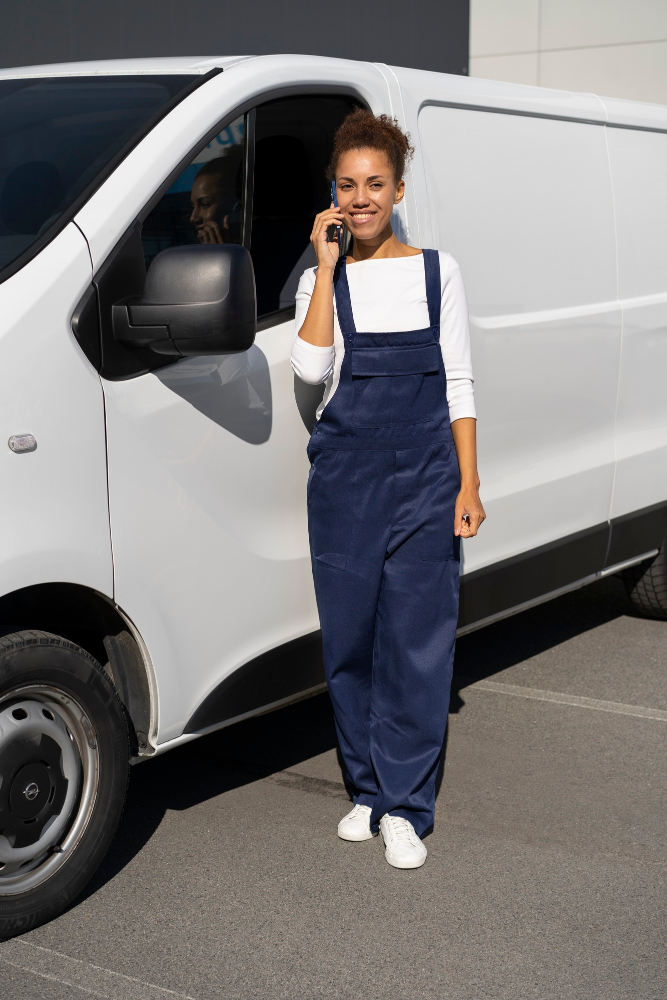Women have come a long way in terms of progress and achievement over the years, with more rights than ever before. One of the biggest recent developments was in 2018 when HGV (heavy goods vehicle) drivers became open to women. It signified an important move forward for equality – not just for gender but within various sectors too – as professional driving had been dominated by men for so many decades beforehand. In this blog post, we’re going to take a look at how far women have come as HGV drivers and explore some of the most interesting aspects associated with their role. So keep reading to find out more!
A Brief History of Women as HGV Drivers
For most of history, it was thought that women couldn’t handle the rigours of driving heavy goods vehicles (HGVs). However, women’s determination and persistence to join the industry have shattered these conventions in recent years. The earliest recorded female HGV driver in the UK was Pat Johnson, she obtained her licence in 1965. Despite facing significant discrimination and scepticism, more and more women began to pursue this career path in the later decades of the 20th century. Thanks to their perseverance, women drivers have become more common on our roads, breaking the stereotype that HGV driving is a male-dominated industry. While the number of women working in this field is still outnumbered, the pioneering women who took up the mantle over the years have inspired a new generation of female drivers to continue to carve out a more equal future in the transport industry.
The Challenges Faced by Female HGV Drivers
Female HGV drivers face a unique set of challenges in the male-dominated industry. One of the biggest hurdles is overcoming stereotypes and prejudice, as some people still view driving an HGV as a job only suitable for men. This can lead to feelings of isolation and insecurity, as well as difficulty finding work and progressing in their career. In addition, physical differences can also pose challenges, as HGVs are designed with male drivers in mind and may have seats and controls that are not ergonomic for women. Despite these obstacles, many women are breaking through and pursuing successful careers as HGV drivers, paving the way for a more diverse and inclusive industry.
Strategies for Overcoming Barriers to Entry
In today’s competitive marketplace, breaking into a new market can be an uphill struggle. The barriers to entry can be high and can be a significant challenge for aspiring entrepreneurs. However, with the right strategies, these barriers can be overcome. Understanding the market dynamics and identifying gaps in the existing offerings are key first steps. Entrepreneurs should also take advantage of government programs and support, such as grants and loans, to help them overcome financial hurdles. Developing a strong brand identity and building a loyal customer following can also go a long way in breaking through barriers to entry. With persistence, tenacity, and strategic planning, aspiring entrepreneurs can successfully enter and thrive in new markets.
Encouraging More Women to Become HGV Drivers
The transport industry has been dominated by men for generations, but as times are changing, more and more women are challenging the status quo and pursuing careers in the industry. However, one area where women are still underrepresented is that of Heavy Goods Vehicle (HGV) drivers. Encouraging more women to join this profession can have significant benefits, not only for the women themselves but for the industry as a whole. With the ongoing driver shortage crisis, more HGV drivers are needed than ever before. Women who embark on this career path will find a range of exciting opportunities awaits them, from long-haul driving to working in construction and logistics. Ultimately, bolstering the number of female HGV drivers can help to promote diversity, increase representation, and ensure equal opportunity for all.
What Needs To Change In The Industry For More Women To Join
In order for more women to feel welcome in various industries, a significant shift in the existing structures and cultures is crucial. For starters, companies need to promote and actively seek diversity in their workforce. Part of this effort involves gender-neutral hiring practices, including having job descriptions that are not biased towards male applicants. Companies also need to ensure equal pay, benefits and opportunities for all employees, regardless of their gender. Additionally, offering flexible schedules, paid parental leave, and childcare support can help women maintain a healthy work-life balance. Ultimately, it is time for all stakeholders to work together to create a more inclusive environment that empowers women and values their contributions.
Benefits of Having More Female HGV Drivers On the Road
The truck industry has historically been male-dominated, and there is a growing interest in increasing the number of female HGV drivers on the road. Not only does it offer more job opportunities for women, but it also benefits the industry as a whole. Studies suggest that female drivers have a lower accident rate compared to their male counterparts, which means fewer insurance claims and increased safety for everyone on the road. Additionally, having more women in the industry can help change the culture surrounding trucking, making it a more welcoming and equitable environment for all. With less gender bias and a focus on delivering goods safely and efficiently, the industry can thrive and continue to grow. When it comes to women pursuing careers as HGV drivers, obtaining HGV licence training is a vital step towards unlocking new opportunities and breaking gender stereotypes in the industry.
The dialogue around the current disparities between female and male HGV drivers is an important one to be had. It’s necessary for those employed in the industry, as well as those hoping to get the chance to join, that more efforts are made to create remunerative working conditions or at least raise awareness of important issues that might hinder women from joining the profession. With more female truckers on the road, there will be better profitability for businesses due to the cost-effectiveness of their services, increased demand for such operators in certain sectors, and a cultural change towards dismantling stigmas still encumbering this highly-unconventional role model. Ultimately, we need better representation of women in HGV driving roles—not just talking about it but actively making it happen. Thus, let us appreciate those already involved in this sector and serve them with respect and admiration while inspiring many others so that this critical job can appear even more attractive in times when there are potentially few other opportunities available for all genders alike.

